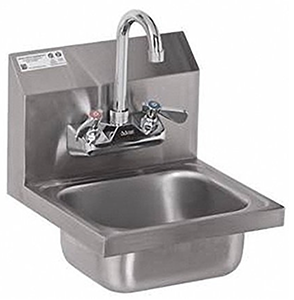 Most theme camps in the Black Rock Desert are bars. Why is that? Having brought a sake bar to Burning Man, I can say that bars are easy. To create a bar camp, aside from hanging wall decorations, I just needed to bring sake and prepare to wash sake cups. Working the event was easy: I just served sake and kept a ready supply of clean cups.
Most theme camps in the Black Rock Desert are bars. Why is that? Having brought a sake bar to Burning Man, I can say that bars are easy. To create a bar camp, aside from hanging wall decorations, I just needed to bring sake and prepare to wash sake cups. Working the event was easy: I just served sake and kept a ready supply of clean cups.
Going beyond simple drink service—to serving food—means that you need to obtain a temporary event permit from the Nevada Division of Public and Behavioral Health. Among other requirements, you’ll need to have a hand-wash station and a three-basin dish-washing station. Essentially, you are following the food-safety rules that a restaurant would need to follow. So why go through that trouble? Because camps that make the effort to serve food on the playa are more appreciated. Anyone can have a bar, but food camps are more rare and more fun.
So we need to follow a set of food-safety rules, but we also want camp members to have a pleasant experience on the playa. So camp infrastructure must be sufficient to keep everyone comfortable. To those ends, the camp will provide these structures and systems:
The Central Shade Structure is partitioned into a Cafe for seating and a Kitchen for decorating cupcakes and for cooking meals. I already have a 500 sq-ft dome, but its cover is not dust-tight. Options for 2017 are (1) create a new dust-tight dome cover and (2) buy a new frame-style canopy tent, such as this. If I invest in a new tent, it should be larger then 500 sq-ft.
The Shower Tent provides a dressing area and a shower enclosure. I already have a PahaQue shower tent similar to this one. For the dressing area, I need to surround it with an enclosure. One option is to buy an 8×8 canopy-tent frame without a cover and make a surround wall for it from canvas.
The Electric Company provides 110-volt wallpower 24 hours a day for the chest freezer, lighting, and other incidental needs. I have a Honda EU2000i gasoline-powered generator which works well and is quiet. Putting it in a sound box will make it even quieter. The Electric Company also is responsible for the 7-cu-ft electric chest freezer that holds the cupcakes and frosting.
The Waterworks provides hot and cold water to the sinks and the shower, as well as collecting Gray Water from the sinks and the shower. While camps often have attendees bring their own potable water and have camp-wide gray-water evaporators, I’m considering solving both of those problems differently. The easiest way to get potable water in camp is to have it delivered to our own potable-water tank by MECO. The easiest way to deal with gray water in camp is to have it pumped out of our own gray-water tank by United Site Services (discussed here). Both of these options cost money, but if there are enough camp members, the convenience will be worth it. Hot water is generated by a propane-fired, on-demand, camping water heater and a battery-powered potable-water pump. There will be a dedicated hand-wash sink which will receive pressurized water, but to help monitor other water use, hot water will be transferred for dish washing and showers using a bucket.